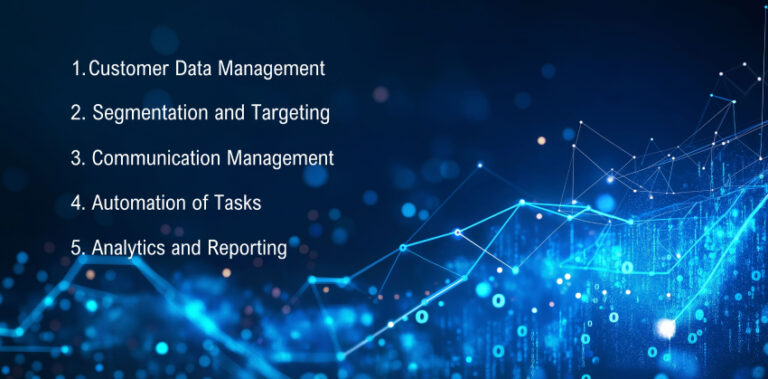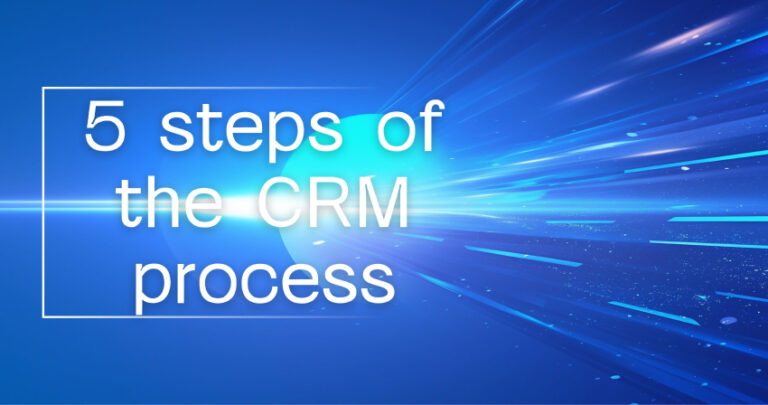In the context of modern business practice and especially because of today’s increasing competition, the growth and enhancement of customer relationships is critical. Therefore, companies wishing to satisfy and foster customer loyalty are increasingly embracing a systematic approach to customer relationship management. This article discusses the major components and stages of customer relationship management, aka CRM process, and its impact on improving customer satisfaction.

In this article
1. What Are the Elements of the CRM Process?
Customer relationship management processes can be understood and defined as the systematic ability to seek, manage, and understand customer behaviors and data throughout the entirety of their relationship with the business. The goal is to rapidly improve customer service, encourage repeat purchases, and increase sales revenue as a whole. A successful CRM process has three main building blocks which are essential concepts in the fulfillment of business objectives:

Customer Data Management
The relevant customer relationship management or CRM process commences with the capacity to gather, assimilate, and systematically manage information on the customer. In other words, it means combining information obtained through phone calls, emails, social media outreach, and face-to-face client meetings into one comprehensive system. This process of data management with regard to the customer ensures that the organization gets a holistic understanding of each customer and that customer interaction has been crafted for maximum engagement and impact.
Segmentation and Targeting
Segmentation is one of the most fundamental steps that helps businesses understand and classify their customers based on factors such as interests, behavior, or desire. Dividing the market into distinct segments means that a company can focus its attention, and intention, on each segment. The benefit of this focused approach is the higher success rate of marketing rollout and higher levels of customer retention and loyalty.
Communication Management
The management of communication is one of the rather integral processes of CRM’s ‘tertiary’ concept. Organizations have to deal with a range of interactions including but not limited to, emails, social media, phone, and in-person meetings, all in a rather seamless and timely manner. There is software that integrates the various instruments and channels and helps in customer segmentation and communication throughout the client’s journey.
Automation of Tasks
Automation is another key feature in CRM architecture allowing businesses to eliminate low-value and mundane activities. Organizations do not have to perform these tasks themselves as lead scoring, sending emails, triggers for follow-ups and data input can easily become automated processes increasing overall productivity while directing attention towards central business activities and leveraging competitive advantage.
Analytics and Reporting
The sophisticated analytics and reporting functions of CRM systems allow organizations to determine the results of their CRM activities. Performance and customer data check by companies provides them with information about customer types, their habits and preferences, and their purchasing schedules, thus helping companies to improve their customer relationship management over time.
2. What Are the Five Steps of the CRM Process?
Typically, a systematic CRM process will comprise five steps. Each step calls for a refinement of customer contact management and helps develop long-lasting relationships.

Step 1: Lead Generation and Capturing
This step involves how a company identifies and appeals to potential customers or even businesses (leads) to which they intend to sell their products or provide services. This is achieved through various marketing channels such as social media, content marketing, email campaigns, and advertisements. Once leads have been generated, the next step entails capturing their details and keeping them in the company’s CRM for the purpose of future engagement.
Details for Effective Lead Generation:
Use of different media channels: Capture leads by multi-channel outreach.
Content marketing: Generate leads by providing informative and useful content.
Social media: A great tool to commence discussions on products and services and spark interest in them.
Step 2: Lead Qualification and Scoring
The objective of this stage of the process is straightforward: there are no bad leads, but some leads can be classified as bad, and this part is dedicated to qualifying and scoring such to determine whether there is any value in pursuing conversion efforts. Takes part in this process of assessing the leads behaviors, willingness, and position. For instance, use CRM systems that have embedded algorithms to score and assign leads based on their likelihood of becoming a paying customer.
Further details on Lead Qualification:
Lead Character Assessment: Use data from allocated CRM to assess the leads’ characteristics and patterns.
Data Management Strategies: Hire outside firms that will sort and analyze big data for you.
Client-Specific Targeting: Change the ways of communicating with clients based on how they have been scored.
Step 3: Customer Acquisition
Having qualified all the scoreable leads, the subsequent action is to use strong selling measures to transform such leads into customers. These usually include cold calling, emails, demos, and proposals. The objective is to solve every one of the lead’s issues making them more likely to purchase the products or services.
Further details on Successful Customer Targeting and Acquisition:
Selling Techniques: Prepare pitches and or proposals with particular regard to the lead’s specific needs.
Demonstrations and Trials: If possible, give potential clients or customers free samples and classic advertising and marketing campaigns such as advertisements.
Effective Sales Negotiations: Training of the selling teams in effective negotiation maneuvers to finalize deals.
Step 4: Customer Retention and Loyalty Building
Once a customer is acquired, the goal should not be to abandon him or her and rather the business should try its level best to retain the customers and make them loyal to the business. This includes giving quality after-sales services, responding to user questions or concerns, and keeping them in touch. Customers with loyalty are likely to come back for more and even encourage their acquaintances to try it out.
Further factors for increased Customer Retention:
End–User Support: Customers need to receive customer services that work well and make personal recommendations at each touchpoint.
Regularity of Communication: Interact with customers promptly concerning services, their products, and even promotions.
Set up Loyalty Programs: Set up reward points and other incentives to encourage and attract customers who are willing to return to shops.
Step 5: Evaluation of Customer’s Views and Practice Improvement
The last step in the process is the collection of feedback from the clients and checking the level of satisfaction with the clients and what areas need development. Feedback is important for businesses as they can develop their commodities and services as well as ways of communicating with clients for better satisfaction. CRM platforms allow for gathering and studying the feedback and estimation of the clients in the form of surveys, reviews, and discussions.
Further details for enhancing Feedback Management are:
Surveys and Polls: People assess their services using surveys and clients’ feedback is also obtained.
Social Listening: Get in touch with relevant forums and be active in them in order to glean feedback about how people interact with the product and their thoughts about it.
Continuous Improvement: This ensures that new and quality improvements will be made to existing products and services in response to the requests made by the clients.
3. How to improve customer experience with the CRM process?
The CRM process can be essential when working on the customer experience strategy, which is vital in today’s industry competition. Here are some approaches to enhance the customer experience through CRM:

First-touch experience is important
The fact that because of the smooth operation of the CRM system, one more important, almost the key for the customer, the moment has been realized – a personal, unique, one-pattern formatted offer that fits the needs of each individual customer.
Foster More Engagement
Due to the highly automated and adaptive nature of modern business, there are opportunities to engage the customer with the provided products at the required time with the right information content.
Identification of Potential Problems
Since every single situation related to the buyer has been seen from the customer’s perspective: who made an inquiry, when and why they come back; it is therefore easy to offer out potential solutions proactively and in the most appropriate manner.
Smooth Transition Across Many Channels
To establish a unified experience across several contact points, the complex CRM system allows clients to shift from one channel to another when communicating with no loss of context. Be it a social platform, a call, an email, or a store, the customers have an experience that endears them to the business with a wholesome touch.
Learning From The Customer
Insights on customers are critical in enabling organizations to take appropriate measures as Manage Eas Analytics CRM clusters around thoughts coverage of the object in a set number of variables and brings the essence of reality towards products harmonized with target customers’ interests. Wherever products and services are provided – there are always opportunities to improve them by identifying the customer’s pain point and creating a better experience.
Conclusion
The CRM process is a comprehensive approach to managing and nurturing customer relationships that drive business growth and customer satisfaction. By understanding and implementing the core elements and steps of the CRM process, businesses can enhance their ability to attract, engage, and retain customers.
With the ability to personalize interactions, deliver timely communication, and proactively address customer needs, a robust CRM strategy fosters improved customer experiences and loyalty. As customer expectations continue to evolve, leveraging the CRM process effectively will be vital in maintaining a competitive edge and achieving long-term success in the marketplace. It is through a commitment to optimizing the CRM process that businesses can create value, build lasting relationships, and thrive in the dynamic business landscape.



